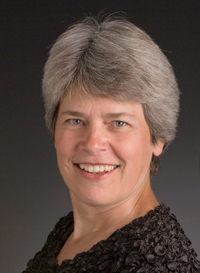by Robert Rollin

American composer Samuel Barber was born in Pennsylvania to a well-to-do family. He was a prodigy who started studying composition, voice and piano at the Philadelphia Curtis Institute of Music at age fourteen. At twenty-five he won the prestigious American Prix de Rome and a Pulitzer travel abroad scholarship to study in Europe for the 1935-36 season. He later won two Pulitzer Prizes in the course of his illustrious career.
Knoxville: Summer of 1915, a southern American impressionistic musical portrait, sets a text by novelist, poet, and screenwriter, James Agee. Agee and Barber, both about the same age, suffered through the loss of their fathers around the same time, so Barber was drawn to this extended, flowery text that approaches poetic language and to its prose stream of consciousness. The intricate, fifteen minute, one-movement piece exists in two versions. Youngstown Symphony music director Randall Craig Fleischer used the smaller chamber orchestra version, but, notwithstanding, it was difficult to balance the soprano with the instrumental forces.
Colton’s voice has a wide range and is uniformly lovely. Her sound is gorgeous, though the piece’s use of many middle register melodic lines in contrapuntal textures often obscured the words. There were beautiful solos by Martin Neubert, English horn, Stacie Mickens, principal French horn, and Cynthia Watson, principal oboe. The string section sometimes overbalanced the voice, particularly when the music became densely contrapuntal. Despite the piece’s performance challenges, it had great expressive beauty, nostalgically depicting a gentler age in American history.
The program began with Aaron Copland’s Billy the Kid Ballet Suite. The original piece was one of the earliest ballets to have an American flavor. After a Chicago two-piano premiere with dancers, Copland reduced the length to twenty-nine minutes and scored the full orchestra version for a New York premiere in 1939. Though the musical material is less complex than that of Barber’s piece and even quotes traditional cowboy songs, Copland’s orchestration is crystal clear, and makes the piece ingratiating and easy to follow. He keeps the music interesting by using complex rhythms and dissonant harmonies that have come to be considered uniquely American.
A piece detailing the life of an outlaw must necessarily contain many episodes. Copland compensated for this by framing these episodes with movements depicting the broad expanses of the American west. He titled the outer movements The Open Prairie. These full-bodied sections employed the open, dissonant quartal harmony that helped Copland come to epitomize the American composer. His orchestra, bigger than Barber’s, had more woodwinds, and much larger brass and percussion sections.
Lively solos in lead trombone, trumpet, and the woodwinds displayed real skill. The distinctive percussive sounds of woodblock, cymbals, maracas, slapstick, bass drum and timpani accompanied these solos. The performance was excellent, and only marred by some ensemble difficulties between timpani and bass drum, unfortunately situated far from one another.
The orchestra performed Gustav Holst’s blockbuster composition, The Planets, Op. 32. Holst decided to write the piece after an astrological conversation with writer Clifford Bax, brother of the composer Arnold Bax.
Mars, the Bringer of War, the first movement, is intense and powerful, seeming to percolate until becoming relentless towards its conclusion. The performance was solid, but the necessarily continuous snare drum part was at times kept so soft as to be obliterated by the rest of the orchestra.
Beautiful solos by concertmaster Calvin Lewis and principal cello Michael Gelfand decorated and enhanced the more impressionistic second movement, Venus, the Bringer of Peace. The extensive use of ninth chords, the combination of trumpets with ringing glockenspiel sound, some charming high pianoforte sounds, ethereal treatment of high woodwinds, and a lovely ending made this movement especially effective.
The rapid and lively third movement, Mercury, the Winged Messenger, featured attractive soloistic passages in violin 1 and 2, oboe 1, flute, and piano. The accumulation of energy was supported by powerful unison passages in the four horns.
The unison horn section continued in Jupiter, the Bringer of Jollity, the fourth movement. The Symphony created a wonderful sense of benign, but intense, joy. Fragmented solos in various sections helped build to the movement’s magnificent climax. The low instruments were particularly effective, as were the uses of string tremolos and the two harps to create color contrast.
Saturn, the Bringer of Old Age, the fifth movement, had a plodding quality that helped create further contrast. Scoring emphasis on the basses, intermittently high cello section, oboe and bassoon solos, pairing of timpani and woodwinds, extensive use of the two harps, all combined to make this performance moving.
Uranus, the Magician, the sixth movement, opened with a fascinating pairing of tenor and bass tuba, followed by three part chords in the bassoons, soon joined by the rest of the woodwinds, strings and brass. After considerable development, an extended tutti diminuendo shrank to timpani and bass tuba solos. The cycle repeated two more times, livened up by a gorgeous horn solo by Stacie Mickens, and a neat pairing of piccolo with cymbals. The huge Largo climax led to a final fade in the last few bars. All the sections did well and helped make the performance engrossing. It was a pity that the Symphony had to omit Neptune, the Mystic, the last movement, because the requisite women’s chorus was not available.
Published on ClevelandClassical.com April 15, 2014.
Click here for a printable copy of this article.



